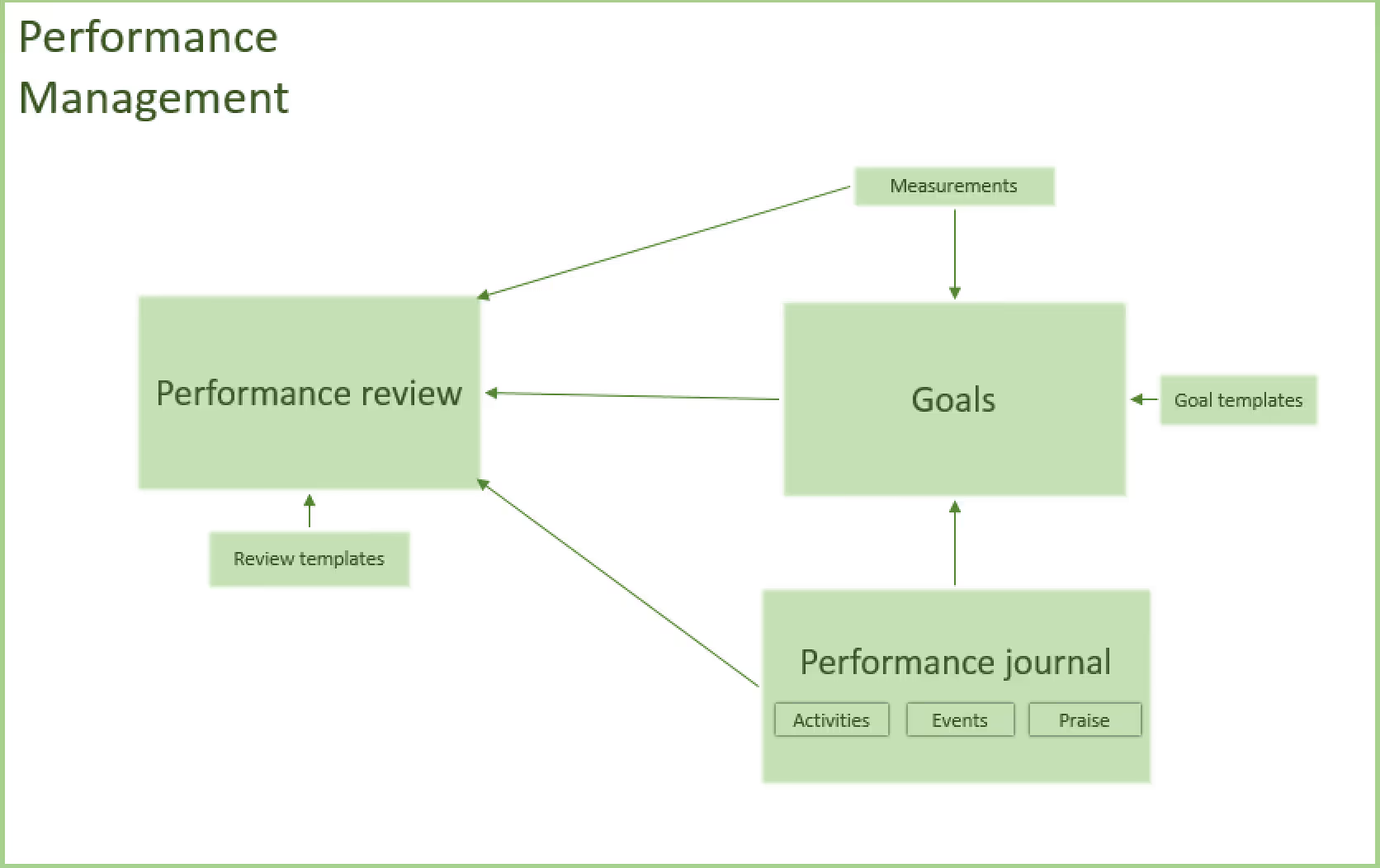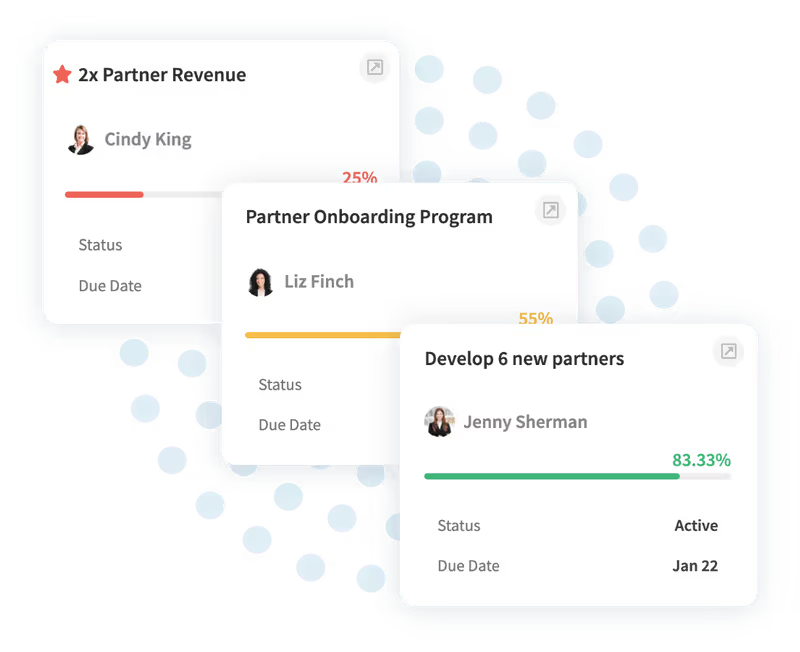Microsoft’s New Approach to Performance Management
Microsoft employees recently ranked the company’s culture higher than any other company with over 500 employees. Microsoft even beat out HR darling Google for the top spot.
The software giant’s high ranking is due to factors including fairness and trustworthy management. These two factors play a big role in performance management, which is one of the keys to Microsoft’s success.
This article will show you what Microsoft’s performance management process looks like now. We’ll also show how their willingness to change processes has helped them get to where they are today.
Out with the Old: How Microsoft Has Changed Its Performance Management Process
Annual performance reviews are the norm at many organizations, and they used to be the norm at Microsoft. There’s something intuitive about meeting once a year to talk about employee contributions and goals for the upcoming year.
Yearly performance appraisals seem like the natural way to review employees. That doesn’t mean they are the best way to review employees.
Annual appraisals can feel heavy, and they rarely impart useful or actionable information. Here are some of the common complaints about annual reviews:
- Take too long
- Tend to be one-sided
- Too formal
- Too general
These annual reviews end up becoming another thing management has to check off their to-do list. Employees do what they can to get through the meeting, then return to work without internalizing any of the information.
Annual reviews were driving many of the Microsoft performance management issues in the past, so the company made some changes. The new process focuses on each employee’s role in the future of the company rather than their past performance.
Microsoft’s Performance Management Process
Microsoft’s performance management process includes:
- Creating a performance journal
- Setting goals
- Conducting flexible performance reviews
The key to this performance review process is its flexibility. There are three components to the process, but employees don’t have to complete every component in order, or at all, before a performance review.

Employees don’t have to write detailed performance journals to create goals. The team doesn’t have to set up goals before conducting a performance review either. This approach creates a nimble process.
Microsoft’s Performance Journals
Performance journals provide employees with a place to gather information during a review period. The employee can catalogue work-related activities and events, as well as future projects. Employees create journals for themselves, and can decide whether to share them with a manager.
Microsoft’s performance journals include a 360 review process. Employees can send feedback to any employee in the organization. The employees involved and their managers will be notified of the review and the review is stored in the employee journal.
Journals are an example of the laid back approach to performance management. Employees and managers aren’t required to share their performance journals with others. There are no rules for word count or number of entries ahead of a performance review. The journals are a tool for employees to support their performance.
How Microsoft Uses Goals in Performance Management
Microsoft provides employees with a platform to manage and track their goals. Management and employees can assign goals, and the performance journal links to goals.
Goals are not required for performance reviews, although managers may choose to include them as part of the review process. This approach enables managers and employees to conduct reviews whenever they are convenient, even if there isn’t enough time to create or review goals in-depth.

Microsoft’s Performance Review Process
Microsoft calls reviews “discussions.” This approach reflects the company’s informal nature. Because Microsoft’s modern review process is so flexible, it can support continuous feedback and more formal reviews.
Check-Ins
Managers can create small meetings for two people by entering a few details in the company’s online platform. Like formal reviews, these meetings are a chance to share personal or team progress, goals, and feedback. Unlike formal reviews, check-ins let employees and managers have ongoing dialog about performance whenever it’s convenient for both parties.
Semi-Annual Reviews
Much of this Microsoft performance management case study shows that their review process is meant to be informal. It caters to the needs of each team. That doesn’t mean Microsoft has abandoned the more formal review process.
Microsoft nestles semi-annual reviews into their continuous feedback approach. One employee on Glassdoor mentioned there is a wide range of ways Microsoft makes sure employees understand and exhibit company values. One of those ways is a semi-annual review.
Ratings have also fallen by the wayside at Microsoft. Employees can focus on opportunities to grow because they aren’t worried about hitting an arbitrary rating number.
Annual Surveys
Managers have their own performance journals where others can submit reviews. Because of this, employees already feel like they have a say in the review process. Microsoft also uses an annual survey that asks employees to share their feedback.
One employee recounts the changes that took place after a survey,
“I remember my first year on my current team. We were all very overworked and stressed, and in our yearly survey, our team and org put very low scores for work-life balance. The shift in work-life balance after that was astonishing, and 1.5 years later, I'm still happy with it.”
Ties to Compensation
Microsoft has always had a generous rewards budget. Now they are investing even more in boosting pay and stock compensation to help keep talent. Microsoft doubled their budget for employee salary increases. They also boosted the range of stock compensation by at least 25%.
According to Satya Nadella, the CEO of Microsoft, says the higher budget helps, "recognize exceptional impact and support retention of our most competitive talent pools."
Key Takeaways For Your Organization
You don’t have to copy every aspect of Microsoft’s performance management process. Pick and choose what you think will work for your business.
Some of the standout features of the Microsoft process include:
- Performance journals allow employees to organize work-related activities and events impact their performance
- Employees can o provide feedback to every other employee in the organization
- Employees and management can create and track goals at any time
- Semi-annual reviews take place between check-ins throughout the year
- Performance journal entries and goals are not required to have a performance review
Find More Inspiration
Other top companies are doing performance management in innovative ways. You can use their techniques in your own performance management strategy.
Articles to check out include:
- How Apple Does Performance Management (And Ideas for You to Consider)
- Google’s Performance Management Playbook: Inspiration for Your Organization
- How Does Uber Do Performance Management?
- How Does Asana Do Performance Management?
- How Netflix does Performance Management
- Deloitte's Radically Simple Review
- How Does Amazon Do Performance Management?
- How Does GE Do Performance Management Today?
- 3 Approaches to Performance Management: Google, Betterment and IBM
- How Does Facebook Do Performance Management?


.jpg)

.jpg)
